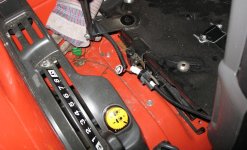beppington
Elite Member
Kubota says about my Grand L3940's PTO:
1 Speed Rear Live - Hyd. Independent
540 rpm @ 2550 Eng. rpm
Electric over Hydraulic PTO Switch (-3 only)
The manual says: "To avoid shock loads to the PTO, reduce engine speed when engaging the PTO, then open the throttle to the recommended speed." ... which I've done every time since new.
Questions:
1) When the tractor is completely shut down & the PTO is off, I can only turn the PTO shaft a little ways in each direction, like maybe a half a turn worth of free play. Why is this? Does my PTO have a brake?
2) Should I also reduce engine speed when disengaging the PTO?
Thank you all, as always ...
1 Speed Rear Live - Hyd. Independent
540 rpm @ 2550 Eng. rpm
Electric over Hydraulic PTO Switch (-3 only)
The manual says: "To avoid shock loads to the PTO, reduce engine speed when engaging the PTO, then open the throttle to the recommended speed." ... which I've done every time since new.
Questions:
1) When the tractor is completely shut down & the PTO is off, I can only turn the PTO shaft a little ways in each direction, like maybe a half a turn worth of free play. Why is this? Does my PTO have a brake?
2) Should I also reduce engine speed when disengaging the PTO?
Thank you all, as always ...
